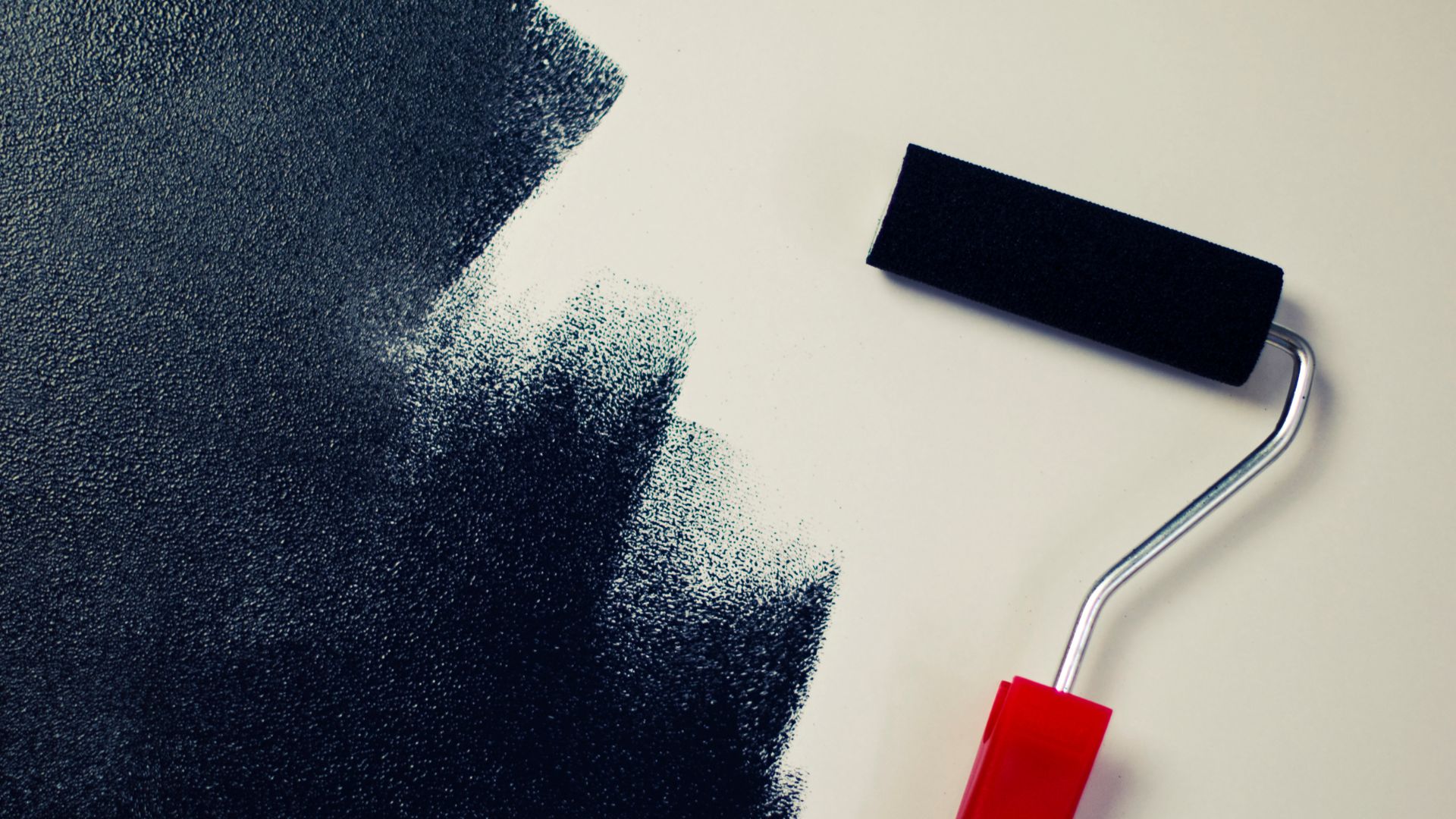When it comes to creating art, the tools at hand often spark creative experimentation. Using a roller to paint a canvas with wall paint might seem unconventional, but let’s explore whether it’s a feasible technique for artistic expression.
Understanding the Basics
Can It Be Done?
Yes, you can use a roller to paint a canvas with wall paint. Wall paint is versatile and can adhere to various surfaces, including canvas. However, there are considerations to keep in mind before diving into this method.
Considerations:
- Texture: Wall paint tends to have a thicker consistency compared to acrylic or oil paints designed explicitly for canvas. This texture might affect the canvas’s surface, potentially altering its original texture.
- Absorption: Canvas absorbs paint differently than walls. Wall paint might not behave the same way on a canvas, impacting the color saturation and finish.
- Quality: The quality of the wall paint matters. Some wall paints might not hold up well on canvas or could crack or peel over time.

A Bearded Man Painting on a Canvas
How to Do It
If you’re eager to experiment with a roller and wall paint on canvas, here’s a simple guide to get started:
- Preparation: Ensure the canvas is clean and free of dust. Prime it with a suitable primer for better paint adherence.
- Choosing the Paint: Select high-quality wall paint suitable for interior painting. Consider thinner consistencies for easier application.
- Application: Pour a small amount of wall paint into a paint tray. Roll the roller in the paint until it’s evenly coated. Apply the paint to the canvas in even strokes, starting from one corner and working your way across.
- Technique: Experiment with different roller sizes and pressure to create varying textures and effects on the canvas.
- Drying and Finishing: Allow the paint to dry thoroughly. Consider applying a sealant or varnish designed for acrylic or oil paints to protect the artwork and enhance its longevity.
So,…
In summary, while using a roller and wall paint on a canvas is possible, it’s essential to consider the texture, absorption, and quality of the paint. Experimentation is key in art, and this unconventional method might yield unique results. However, for optimal outcomes, traditional art paints designed explicitly for canvas might offer better control and quality.
External Resources:
For further exploration on painting techniques and materials, check out these resources:
- The Spruce: How to Choose the Right Paint Roller
- Art is Fun: Acrylic Painting for Beginners
- Bob Vila: Tips for Painting on Canvas
Experimentation in art is always an adventure. While using a roller and wall paint might bring about unexpected results, it’s part of the creative journey. Feel free to explore, adapt, and innovate to create your unique masterpiece.
Exploring Further Possibilities
Embracing Unconventional Techniques in Art
Using a roller and wall paint on canvas isn’t the only unorthodox approach artists have taken. Throughout art history, creators have embraced unconventional tools and methods to push the boundaries of expression.
Historical Examples
1. Jackson Pollock’s Drip Painting: Pollock revolutionized the art world by dripping and splattering paint onto canvases laid on the floor. His unique technique challenged traditional painting methods.
2. Georges Seurat’s Pointillism: Seurat used tiny dots of color to form images. This technique involved applying small, distinct dots that blend optically when viewed from a distance, creating a cohesive image.
3. Collage Art: Artists like Pablo Picasso and Georges Braque introduced collage, incorporating diverse materials like newspaper clippings, fabric, and found objects into their artworks.
The Essence of Artistic Exploration
Art thrives on experimentation and innovation. Artists continuously seek new ways to convey ideas, emotions, and perspectives. While traditional tools and techniques offer a solid foundation, venturing into unconventional territory often sparks creativity and originality.
Advantages and Limitations
Advantages:
- Unique Effects: Using a roller with wall paint might produce textures and patterns not achievable with standard brushes.
- Cost-Efficiency: Wall paint can be more affordable than specialized art paints, allowing for larger-scale projects.
- Accessibility: In certain situations, wall paint may be more readily available than artist-grade paints.
Limitations:
- Quality Concerns: Wall paint might not have the same archival quality as art-specific paints, impacting the artwork’s longevity.
- Texture Issues: The thickness of wall paint could alter the canvas’s natural texture, affecting the final appearance.
- Color Consistency: Achieving consistent color saturation might be challenging due to canvas absorption.
Conclusion
Artistic experimentation is the heartbeat of creativity. Using a roller and wall paint on canvas is an adventure worth exploring, fostering innovation and pushing the boundaries of traditional artistry. Embrace the unexpected, learn from the process, and celebrate the uniqueness of your creative journey.
Final Thoughts
Remember, art is about self-expression and exploration. Whether you’re a seasoned artist or an enthusiastic beginner, don’t hesitate to step outside the conventional realm and embrace new techniques. Each stroke, splash, or roll adds to the story of your artistic evolution.
Art is limitless, and the journey of discovery is just as valuable as the final masterpiece.
External Resources:
Comparison tabular
Here’s a tabular comparison between using a roller with wall paint and traditional art paints on canvas:
| Aspect | Roller with Wall Paint on Canvas | Traditional Art Paints on Canvas |
|---|---|---|
| Texture | Wall paint may create unique textures, potentially altering the canvas surface. | Art paints designed for canvas provide smoother application and controlled textures. |
| Absorption | Wall paint might behave differently due to the canvas’s absorption, impacting color saturation. | Traditional art paints have predictable absorption rates, allowing for consistent color application. |
| Quality | Wall paint might lack the archival quality of traditional art paints, potentially impacting longevity. | Art paints specifically designed for canvas offer higher quality and durability. |
| Variety | Limited color variety in wall paint compared to the extensive color range available in art paints. | Vast color options and specialized paint types (acrylic, oil, watercolor) for various artistic needs. |
| Cost | Wall paint can be more cost-effective for large-scale projects due to its affordability. | Traditional art paints can be more expensive but offer higher quality and specialized features. |
| Availability | Wall paint is widely available in hardware stores and easily accessible. | Traditional art paints are available in art supply stores, providing a comprehensive range of artistic mediums. |
| Ease of Use | Roller application may be simpler and quicker for covering larger areas of canvas. | Brushes allow for precise control and intricate detailing, ideal for various artistic techniques. |
| Longevity and Preservation | Wall paint may lack the necessary elements for long-term preservation and could deteriorate over time. | Traditional art paints are formulated for durability and preservation, ensuring artwork longevity when properly maintained. |
This comparison highlights the differences between these painting methods, showcasing their respective advantages and limitations concerning texture, absorption, quality, variety, cost, availability, ease of use, and longevity. Both approaches offer unique possibilities for artists, each catering to different preferences and artistic goals.
Wrapping up
In the realm of art, the journey is as beautiful as the destination. Whether you choose the unconventional path of using a roller with wall paint on canvas or opt for traditional art paints, your creative expression knows no bounds.
Embrace experimentation, relish in the unexpected textures, and revel in the unique strokes that define your artistic journey. Each brushstroke tells a story, and every splash of color adds depth to your narrative.
Remember, art isn’t confined to conventional methods; it’s about breaking barriers, venturing into uncharted territories, and discovering the extraordinary within the ordinary.
So, pick up your tools, whether they be a roller or a paintbrush, and let your imagination soar. Create, explore, and let the canvas be your playground of endless possibilities.
Your art is an expression of your soul let it speak volumes and resonate with the world.
Happy creating!

For over a decade, I’ve been Mike, an artist, crafter, and designer deeply immersed in the Croc world. I thrive on crafting unique, size-inclusive patterns, fostering creativity, and sharing them on ktforum.com. My designs aim to ignite your creative spark and delight you, ensuring clarity and ease of use through rigorous testing. Join me in expressing your creative flair and showcasing your craft with joy.
Related Posts
- Should You Sand a Canvas Before Painting it with Wall Paint
When it comes to using wall paint on canvas, the question of sanding often arises.…
- Can You Paint Over Existing Wall Paint on Canvas
If you're an aspiring artist or someone enthusiastic about trying their hand at painting, you…
- Testing Wall Paint on Canvas: A Smart Approach to Your Painting Project
When it comes to transforming a canvas into a masterpiece, choosing the right paint is…
- Techniques for using wall paint on canvas
Painting on canvas with wall paint can yield fantastic results, but it requires a few…

